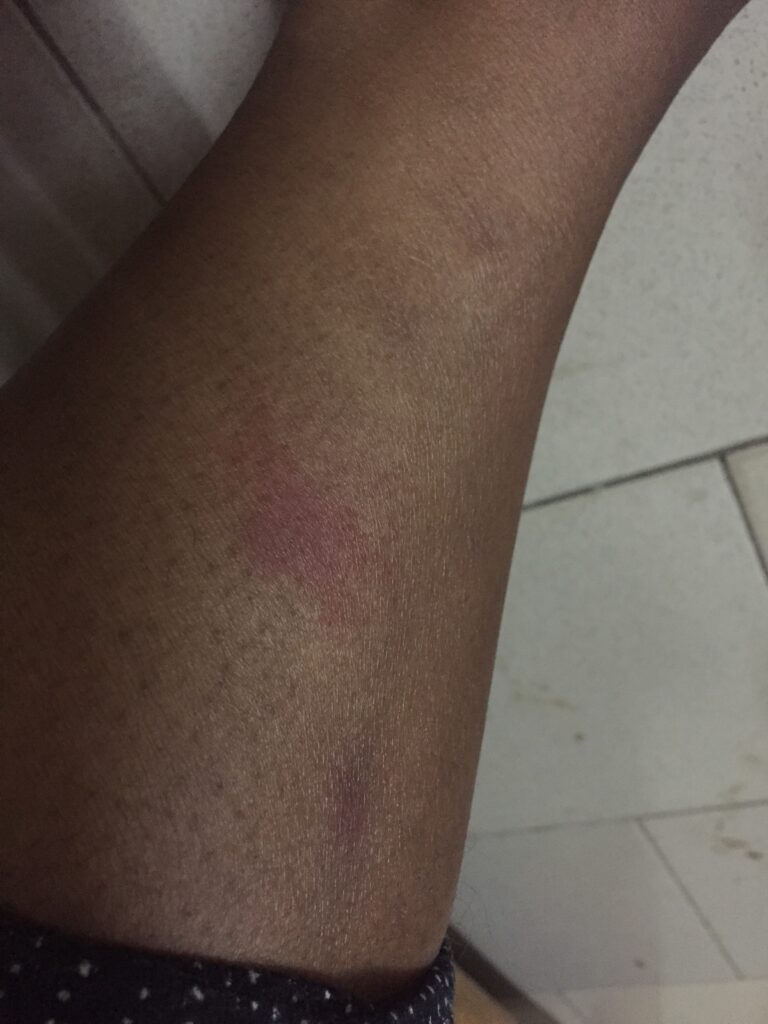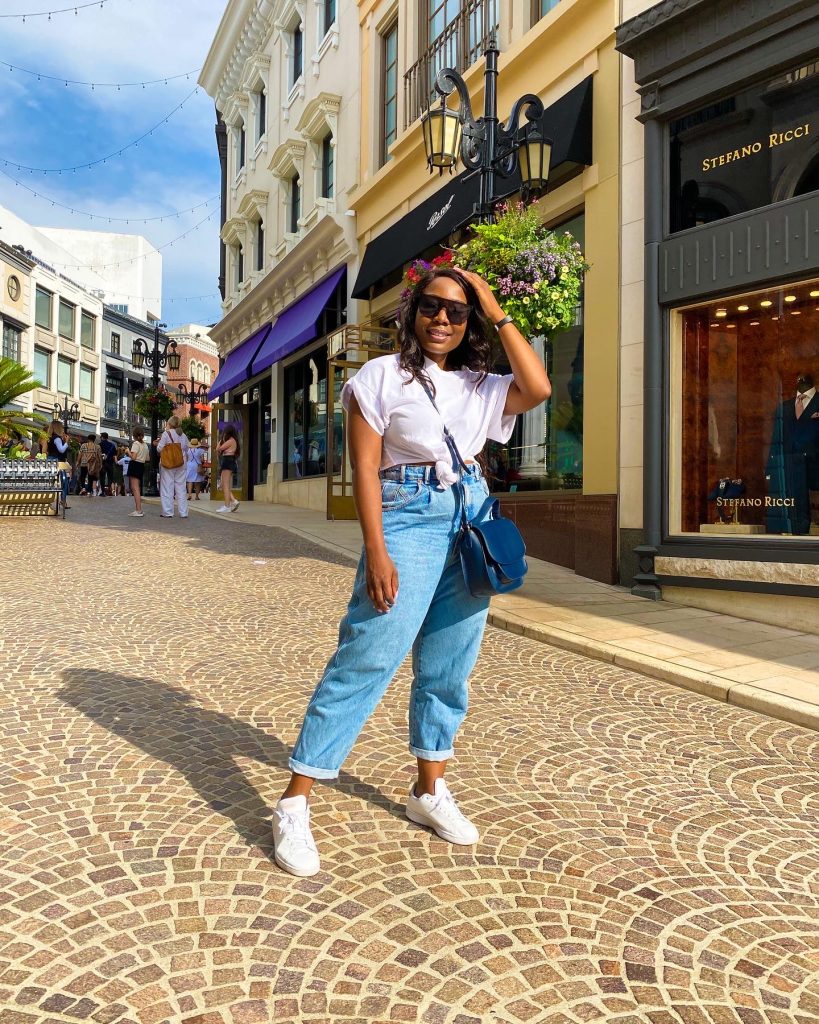What went wrong on my trip to Cameroon
Despite using mosquito repellent regularly, I still had countless bites, especially in the evenings when mosquitoes are most active. The day before my flight back, I felt a little chilly but assumed it was because I’d been out late getting my hair braided.
On the day of my flight, I woke up with a headache, took some Tylenol, and decided to push through. I didn’t want to miss it. By the time I was boarding the plane, I was feverish and sweating.
The malaria symptoms hit fast
1. Yellow taxi in front of the government building
This photo was taken right outside one of the larger government buildings in Yaoundé. The streets were busy, and the heat was high. I remember standing by the dusty curb as yellow taxis zipped past, each one painted in the city’s classic red and yellow pattern.
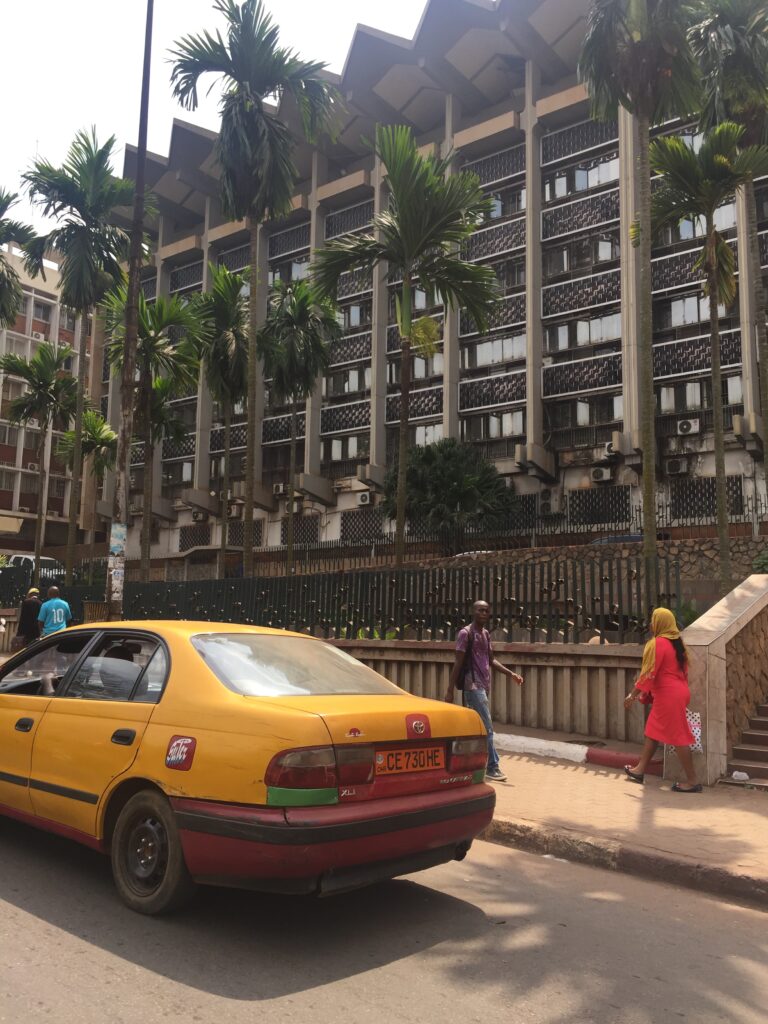
If you’re visiting an urban area in Cameroon, comfortable but polished clothing is best. Opt for breathable cotton shirts and loose pants that cover your legs, especially if you’ll be out after dusk. A lightweight scarf or hat can help protect you from the sun and mosquitoes.
2. Street stand with Cameroon flags
This scene was captured on a day when local vendors were selling flags and souvenirs in front of a bar advertising Kadji Beer. Everyone was in high spirits, dressed in vibrant yellow T-shirts with the Cameroonian flag waving above them. What this picture doesn’t show is how many mosquitoes were circling under the shade of the trees nearby.

Bright colors are great for blending in with the festive street vibe, but remember that mosquito bites don’t care how good you look. Consider wearing long sleeves even in the heat, and treat your clothes with insect repellent. You’ll be thankful you did later.
3. Residential street with taxis
This quiet residential street felt peaceful in the late afternoon, just before sunset. I remember the breeze finally picking up and the streets starting to clear as everyone went inside. Unfortunately, that’s also when mosquitoes become most active.
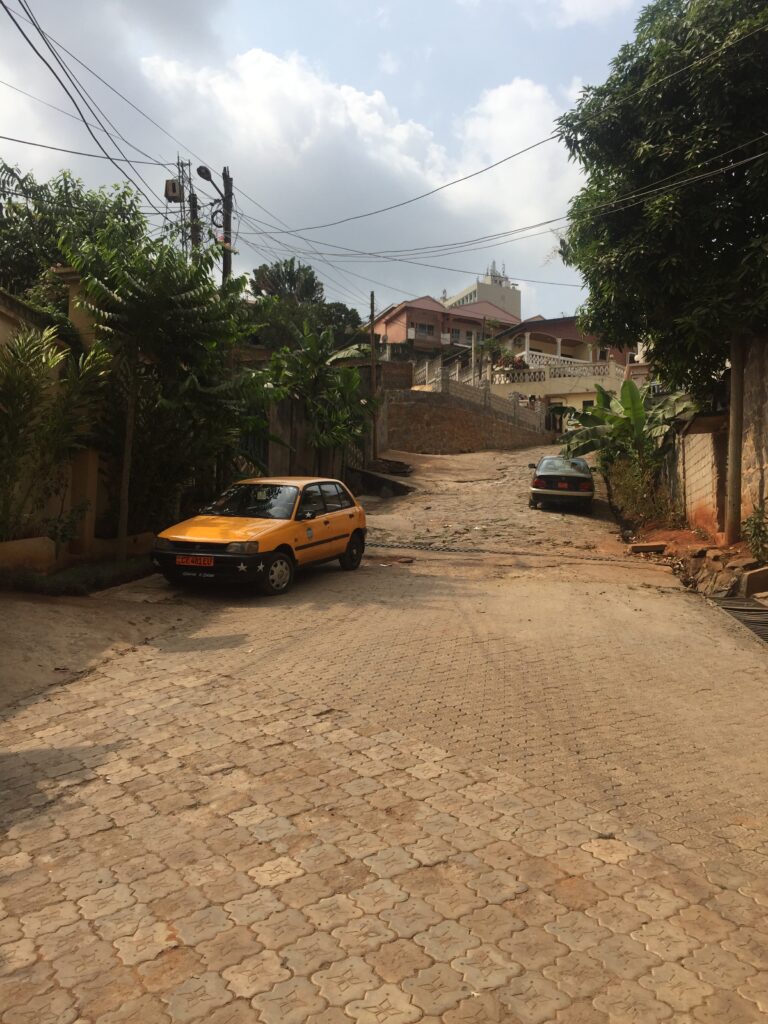
Wearing long pants and closed shoes is essential in the evenings. Lightweight trousers in breathable fabrics are a good compromise between comfort and protection. Avoid open sandals during dusk unless you’ve heavily sprayed yourself with repellent.
4. Strapless brown print dress
This was taken during a church ceremony where I wore a strapless dress made of traditional fabric. The design was simple but eye-catching, and the fit was perfect for the hot, dry weather. I loved the style, but it left my shoulders and arms completely exposed.

If you want to wear sleeveless or strapless outfits, pair them with a light shawl or kimono during mosquito-prone hours. You can still showcase your dress while covering up when necessary. Alternatively, carry a foldable mosquito net jacket in your bag for evening events.
5. National Museum of Cameroon
Here, I visited the National Museum in Yaoundé, a beautiful white colonial building with statues of traditional figures at the entrance. It was quiet and calm, with hardly any tourists around. Inside, I learned a lot about the country’s rich culture, but again, I had not used repellent that morning.

Museums and indoor attractions can be great places to stay safe, but some areas still have open windows or poorly sealed doors. A lightweight maxi dress with sleeves can be both stylish and functional. Add closed-toe flats or low sandals for easy walking across uneven floors.
6. Market with traditional clothing
This was taken inside one of the main artisan markets where I shopped for local dresses. The space was packed with fabrics, colors, and people moving quickly between tiny stalls. I spent hours here, and it was worth it—but it also meant long exposure to biting insects in tight, unventilated spaces.
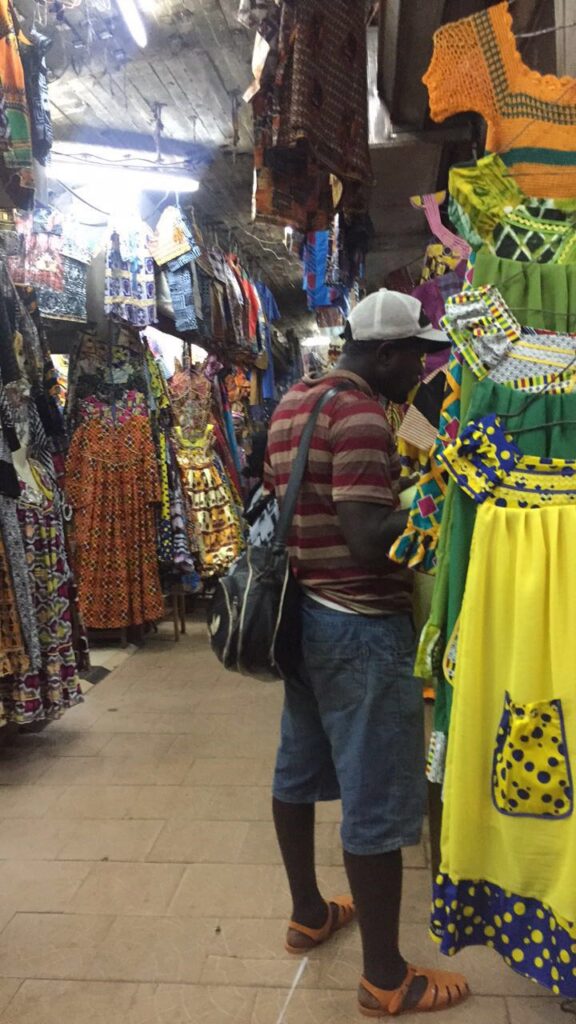
When heading to markets, wear something simple and easy to move in, like leggings with a tunic or a t-shirt dress. Bring a crossbody bag to keep your hands free and avoid fumbling with repellent wipes or fans. Keep repellent in your pocket and reapply frequently.
7. Pink traditional outfit with headwrap
In this shot, I’m wearing a full-length pink traditional outfit with a matching headwrap. It was tailored for a family event, and I loved how it looked in photos. The headwrap kept my hair tucked in, which helped reduce insect exposure on my scalp.
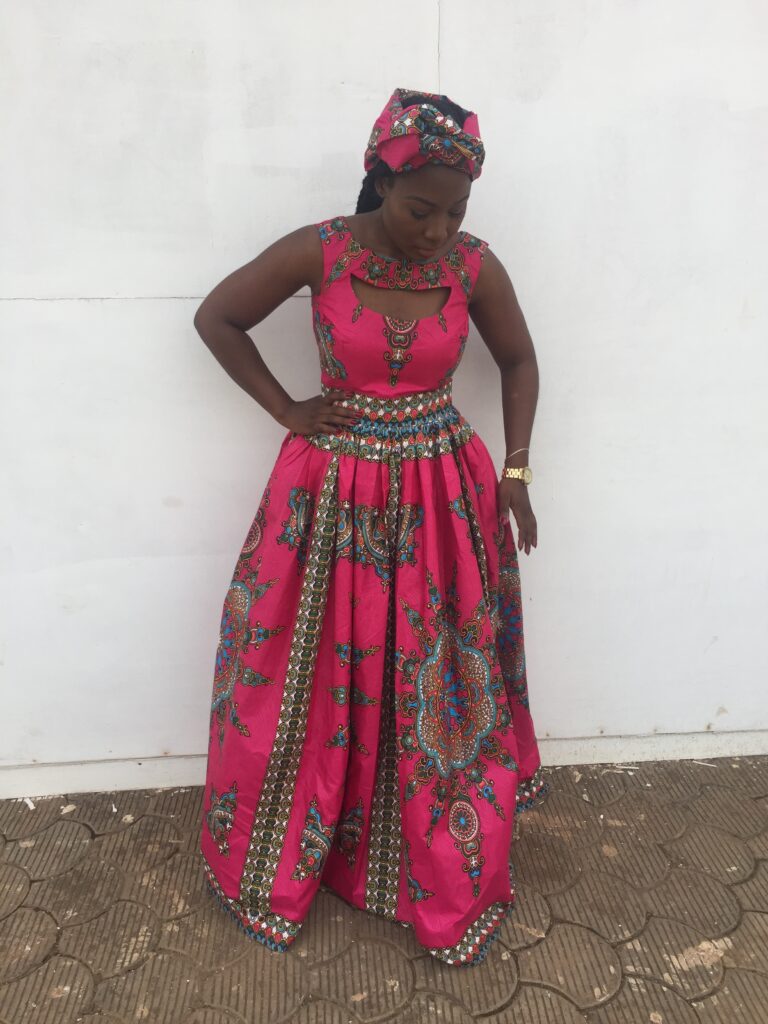
Wearing traditional attire that covers most of your skin is actually one of the most practical ways to stay protected. If you’re having outfits custom-made, ask for longer sleeves or high necklines if possible. Pair the outfit with a stylish but functional repellent bracelet.
8. Two-piece pink and green set with heels
This picture was taken outside a formal venue where I wore a bold, tailored two-piece. It looked great and was breathable, but the short sleeves and skirt left much of my skin exposed. I didn’t realize until later that evening how many bites I had collected around my ankles and arms.

You can still wear shorter pieces in Cameroon, especially during the day, but always have backup protection. Ankle socks treated with repellent and a spritz on your arms can make a big difference. Also, pack a travel-size fan with mosquito-repelling essential oils.
9. Red tunic with purple pants
This casual day outfit was perfect for running errands and visiting friends. The tunic gave enough coverage for the heat, and the fitted pants were comfortable for moving around town. Still, I missed a few spots when applying repellent, and that’s where I got bitten.

Loose, long tops in breathable prints are great for city days. Choose colors that won’t show sweat easily, and avoid perfumes or scented lotions that might attract bugs. Keep a small bug spray in your purse and reapply during the day, even if you think you’re fine.
10. Rash on lower leg from Malaria
Red marks are visible on the lower part of the leg, just above the ankle. These showed up during the worst part of the fever and stayed long after the sickness had passed. What began as a few bites turned into one of the most painful, exhausting illnesses I’ve ever experienced.
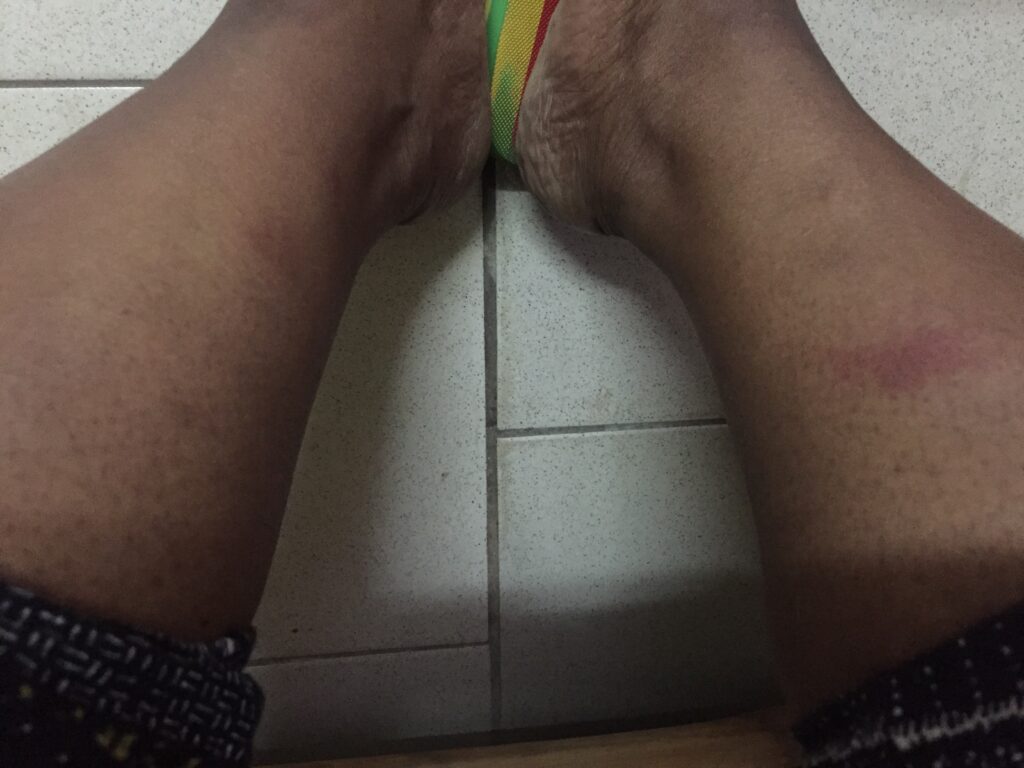
Even a single mosquito bite can lead to serious consequences if you’re not protected. Before traveling to regions with malaria, talk to your doctor about preventative medication and pack enough repellent to last your entire trip. Cover your skin in the evenings, use treated nets when sleeping, and reapply protection throughout the day.
